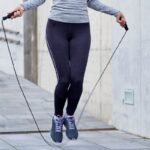Finding the perfect CrossFit time slot can feel like searching for a mythical golden hour. You’re juggling peak performance, optimal recovery, and a packed schedule. Many CrossFitters struggle to find the right time for their workouts, often prioritizing schedules and energy levels above their bodies’ natural rhythms. This impacts not only workout performance but also recovery, sleep, and overall health. Finding that ideal time allows you to tackle your workouts with more energy and focus while minimizing injury risk and maximizing recovery. This guide dives into the crucial factors determining optimal workout timing, helping you discover your perfect CrossFit window to unlock your full potential.
Your worries are valid. We all face concerns about performance – feeling drained, losing power, or experiencing burnout. Recovery is essential, too; you want to be able to feel ready for your next workout. Energy levels are a major challenge. Finding the right time impacts your schedule – can you squeeze it in around work, family, or other commitments? My guide will explore all of these critical elements to help you find the right time for you.
What is the best time of the day for Crossfit?
The best time of day for CrossFit is often in the morning, and there are a few reasons why it works well for most people. In the morning, your body has rested and recovered, which means you have more energy to put into your workout. Studies have shown that exercising in the morning can help boost metabolism and set a positive tone for the rest of the day. Plus, morning workouts have been linked to better consistency since they’re completed before other daily commitments or distractions can get in the way. It’s also a great way to improve your mood and focus for the day ahead!
Additionally, morning workouts can enhance your sleep patterns and regulate your circadian rhythm. When you work out early, your body is more likely to wind down at a healthy time in the evening, improving your sleep quality. Moreover, getting your workout done in the morning frees up your evenings for relaxation or other activities.
However, if mornings aren’t the best time for you, don’t worry! Evening workouts are still great, and it’s much better to train at night than not at all. Evening sessions still offer benefits, such as greater strength potential due to body temperature being higher later in the day, and they can be a good way to unwind after a busy day. Whatever time works for you, the key is consistency, making sure you get your workout in is the most important thing!
Training Adaptations & Recovery
Recovery is crucial after any workout, especially high-intensity CrossFit. Your body needs time to repair muscle tissues and replenish glycogen stores. Different times of day impact this process. Evening workouts may offer better recovery than early mornings if you allow a sufficient break before sleep. Poor recovery can lead to overtraining and increase injury risk.
Hormonal responses vary throughout the day, impacting muscle repair and recovery. This difference highlights the need to understand your body’s unique hormonal cycles for effective recovery after your CrossFit workout. Effective recovery is a cornerstone of progress and injury prevention; paying attention to these natural rhythms is vital.
Lack of sleep significantly reduces your body’s ability to recover. Adequate sleep is paramount to optimizing post-workout recovery and supporting optimal performance in subsequent sessions. Don’t compromise on sleep for your CrossFit routine.
The timing of meals post-workout is essential for muscle recovery. Timing your nutrition based on your workout time helps ensure your body has the resources it needs to repair and rebuild. This directly impacts the effectiveness of your CrossFit training by promoting healthy muscle recovery.
Circadian Rhythms & CrossFit
Circadian rhythms deeply influence your body’s hormonal balance. Cortisol, growth hormone, and other hormones crucial for exercise performance have varying levels throughout the day. Identifying these patterns is critical for optimizing your CrossFit performance and recovery.
Body temperature fluctuates naturally. Understanding these fluctuations provides a context for when your body functions optimally and when it might be less responsive. Optimizing your CrossFit training hinges on recognizing these fluctuations. Specific research, for example, might investigate how different times of day affect hormone levels for optimal recovery post-workout.
Different people experience different hormonal responses. While some people might experience a peak in strength in the morning, others might find better results later in the day. Understanding that personal variation is crucial. Recognizing your body’s individual rhythm allows you to find the sweet spot for your specific needs.
Final word
The best time I recommend for your CrossFit workout is morning, as it sets a positive tone for the day, boosts metabolism, and helps improve consistency. However, if mornings aren’t the most convenient for you, evening workouts are still a great option.








